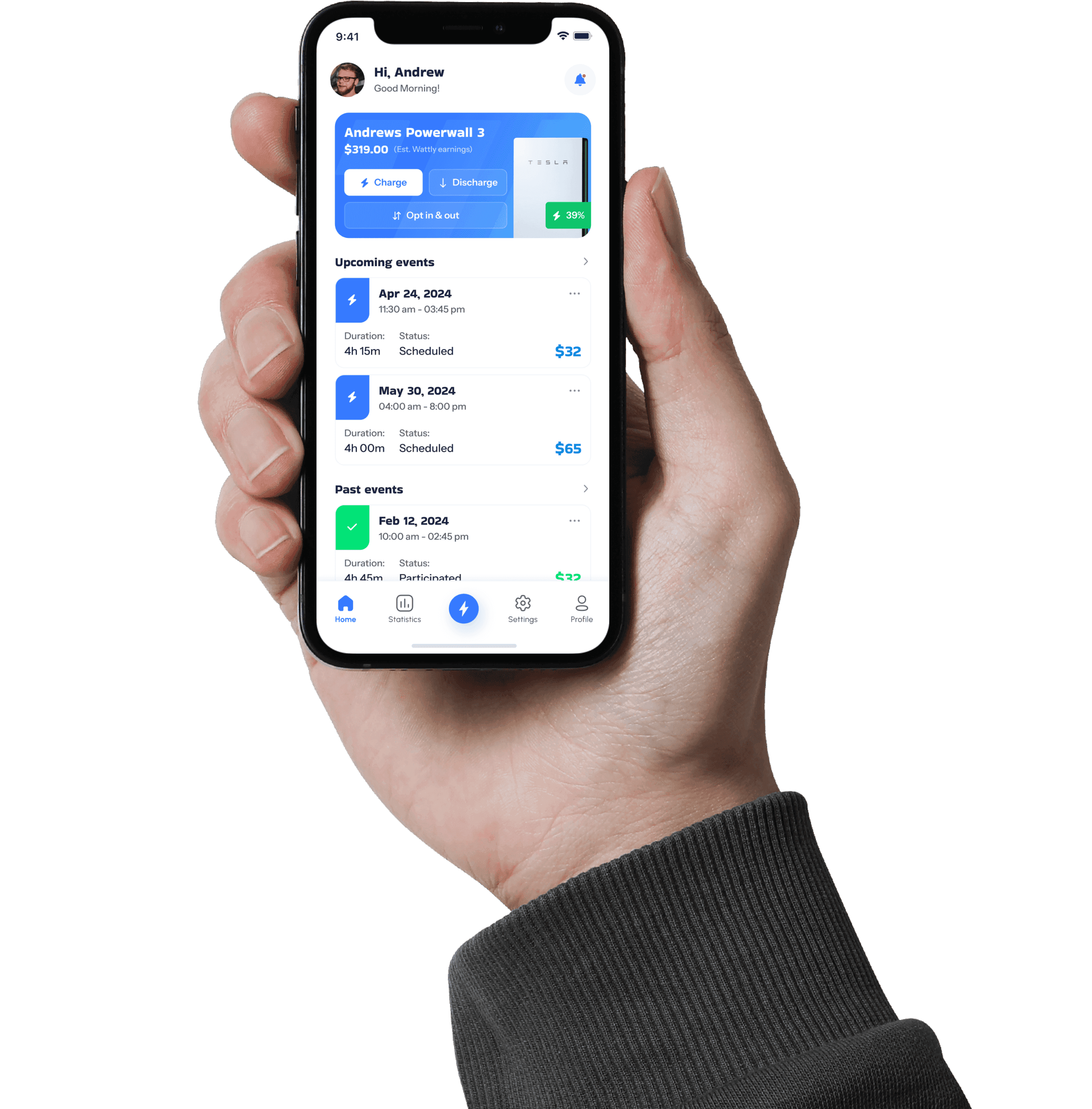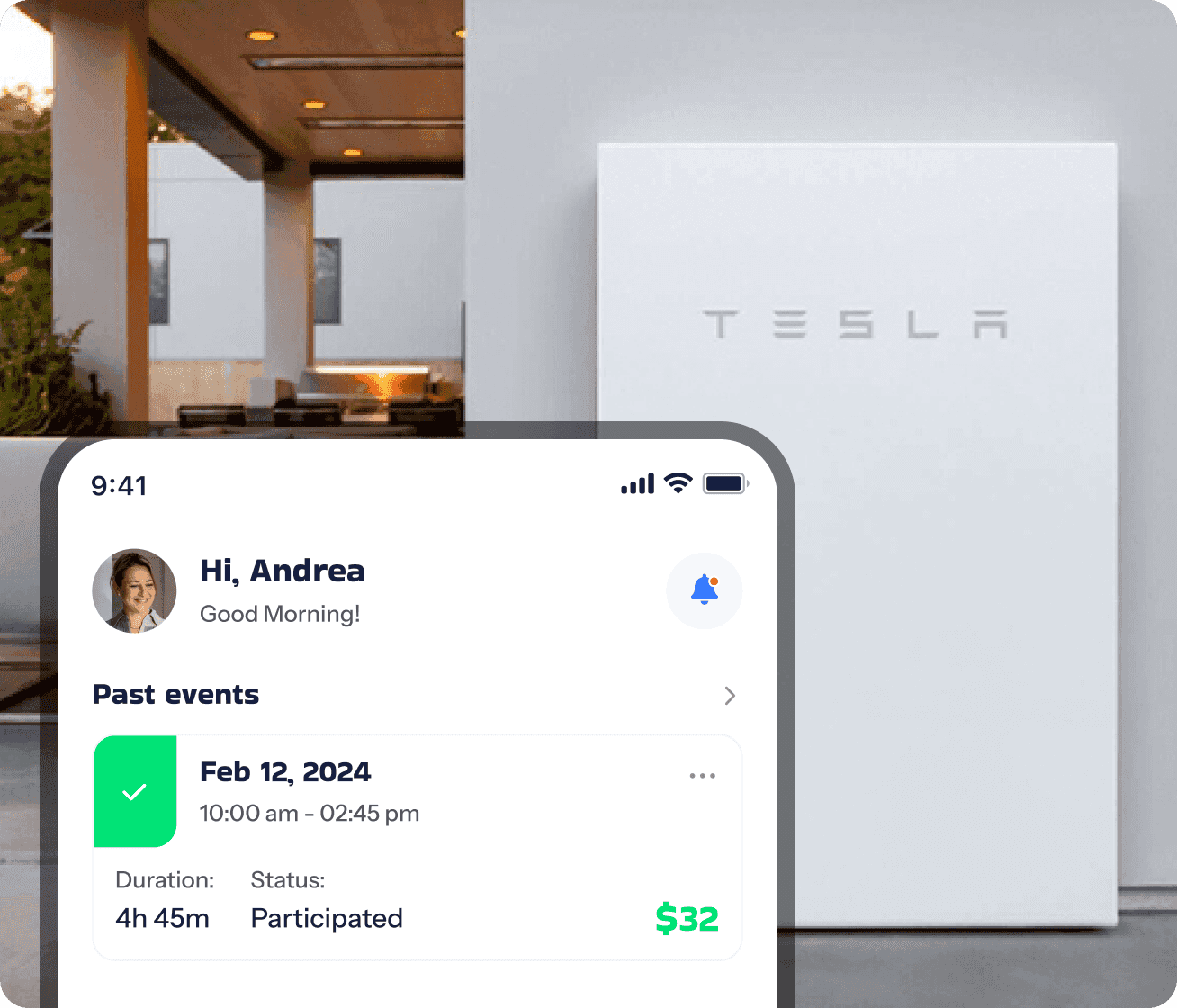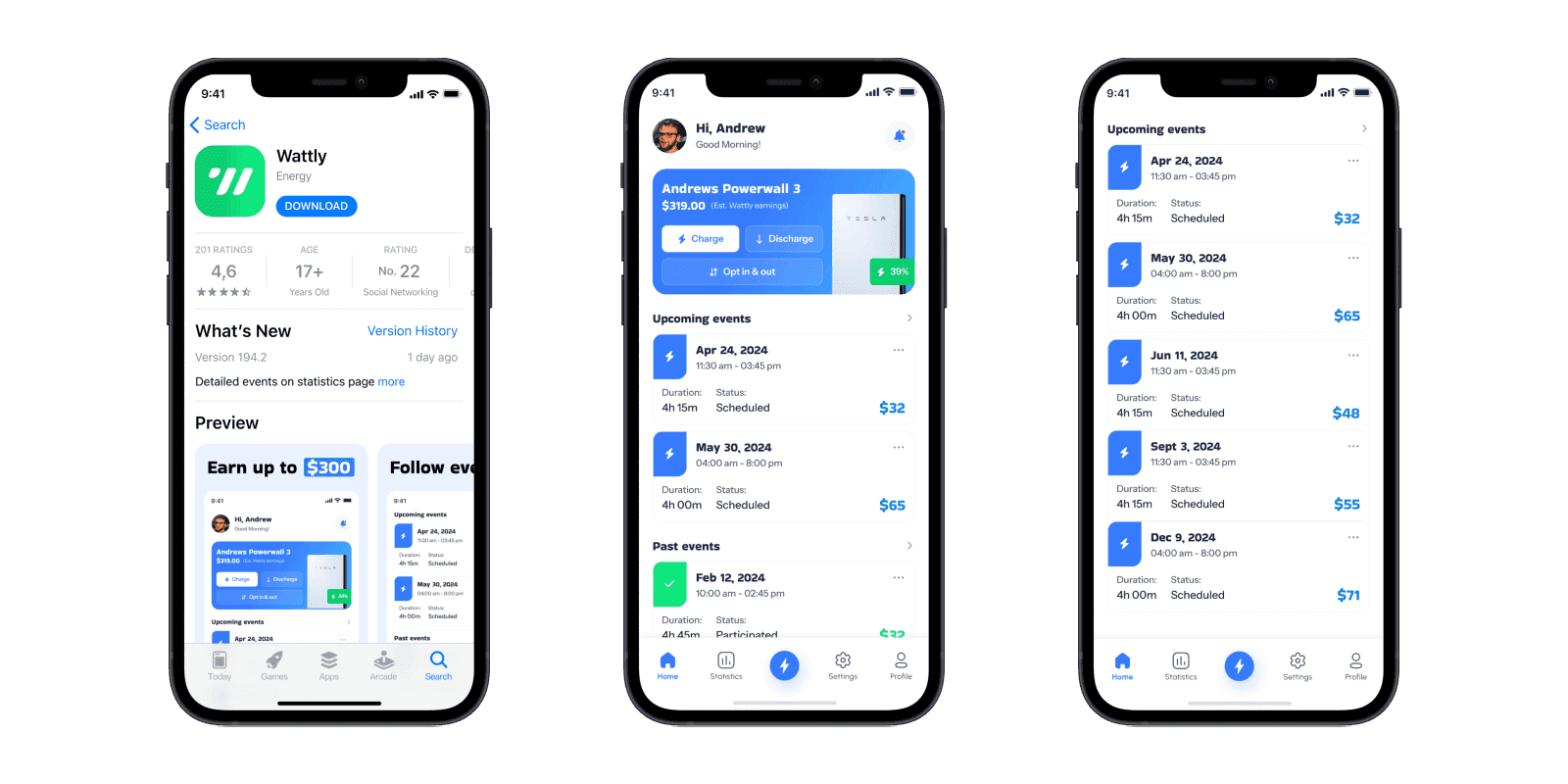
Wattly
Born from our passion for a sustainable future, we launched a spinoff startup to power the energy industry's transition. Once we precisely defined the problem we wanted to solve, we developed the solution entirely from scratch and launched it in the US market. Wattly embodies our dedication to making a meaningful impact in an industry ripe for transformation.
Wattly
iOS, Android
2024
PRODUCT DISCOVERY
UX DESIGN
BUSINESS DESIGN
REACT NATIVE
TYPESCRIPT
NODE.JS
AWS
CLERK
NEON DB
REDIS

the problem
Observing global energy shifts, we recognised the increasing need for grid balancing services, driven by rising electricity demand and the growth of renewable sources and decentralised generation. Traditional solutions, like ramping up power plants, are costly for operators and consumers and environmentally harmful. However, being able to manage residential electric devices and dynamically utilise the flexibility of their consumption could offer a viable alternative.
The solution
We developed Wattly, a platform to democratise energy flexibility for residential battery owners. By aggregating device capacity, Wattly enables residential device owners to earn rewards by participating in flexibility programs. This helps grid operators in balancing the gridwhile reducing users' electricity bills and carbon footprints.
To tackle this complex issue, it was crucial to cut the scope and find a meaningful MVP solution to start with. After a thorough initial discovery phase with desktop research and many user interviews, we focused our early product on residential batteries and users in California. This decision was supported by several factors:
- market accessibility - established support system, 3rd party applications, new laws, and programs through which we could easily access the market
- the prevalence of batteries in the region - 843 MW capacity, meaning 120.000 installations in 2023 which puts California on the top of the leaderboard
- and the urgent need for grid stability - weekly blackouts in some regions
The app already handles user management, residential device (battery) management, and flexibility program enrolment through Leap. We can control the users' devices and respond to grid events. The users can opt in or out of future events based on their preferences and schedule. Past events and user behaviour can be analysed both by the user and us, making flexibility forecasting possible. We have developed the app in React Native using Typescript (Javascript). Our backend system is based on Node.js running on AWS (Amazon Web Services). We are using NeonDB (Postgres) and Redis as databases.
the outcome
Currently, we are running validation and user acquisition campaigns tocollect feedback and early users before our intended launch later this year. We've also nailed the business details with our partners, enabling the product's success.
Afterwards, we plan to expand incrementally to other locations and device types. Our goal is to allow customers to participate in various types of flexibility programs worldwide using a wide range of residential electric devices. We will shape our product according to incremental learnings and potentially build incentive programs, competitions, community referrals, and educational resources like energy-saving tips.



Are you interested in working with us?

